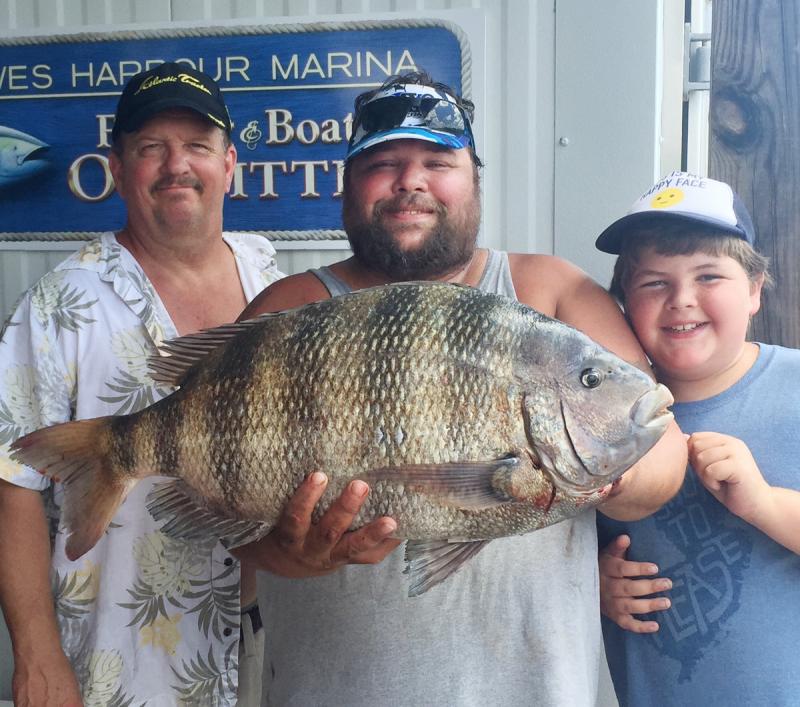The Delaware Bay is not dead
If you listen to some of the fishing reports on social media you might think Delaware Bay is devoid of fish, but nothing could be further from the truth. I fear too many folks are still living in the past, when you could fill the box with big trout and catch plenty of flounder from Flounder Alley. Sorry, pumpkin, those days are long gone and may or may not return.
The Delaware Bay has changed, but it still holds lots of fish. The trout are small and you can only keep one over 13 inches. The flounder have relocated to the reef sites because the conch dredgers have destroyed the natural bottom where they used to live.
One day last summer, I took my 16-foot tin boat to Site 10 and the Outer Wall. I caught croaker, trout, blowfish, kings, bluefish and one smooth dog shark. On Monday of this week, two kayakers caught seven keeper flounder while fishing close to the pilings beyond the end of the fishing pier at Cape Henlopen. Sheepshead have been caught at the Outer Wall and the Ice Breakers. The Captain’s Lady out of Bowers Beach and the Angler Fleet out of Lewes are keeping customers happy catching whatever bites.
In spring 2015, the bay saw an unprecedented number of big bluefish that stayed around for a month. This spring, some of the big blues returned, and rockfish were caught as far up the bay as Delaware City. Right now, there are a decent number of summer slot-sized rock available in the upper bay and most of the tidal rivers and creeks.
Last year, I had a great time catching big croaker on light tackle out of the Lewes-Rehoboth Canal. So far this year, I have caught croaker, trout, kings and the always-present smooth dog sharks in the canal and at the Outer Wall. They are catching croaker two at a time on the fishing pier at Cape Henlopen.
Does that sound like a dead bay to you? Sure doesn’t sound like it to me.
Fishing report
The biggest news from the lower bay are the big sheepshead being caught at the Outer Wall and the Ice Breakers. I am far from a sheepshead expert, but I do know they eat things that grow on rocks and pilings. I have had some success using crab and clams for bait. The amount of bait on the hook should be fairly small so the fish can take it in all at once. They don’t exactly hit like a freight train, so strike at the slightest tap. They do pull like a freight train, so have your drag set tight and start cranking as soon as you know the fish is hooked.
The Lewes-Rehoboth Canal is producing a few flounder, small croaker and slot rockfish. Those who target rockfish drift eels between the Savannah Road bridge and the railroad bridge with the best action early in the day.
The reef sites hold flounder, croaker, kings and blowfish. Flounder are caught by those who vertical jig a bucktail and Gulp! combination directly over hard structure. Bloodworms are the best bait for the bottomfish along with squid and sand fleas.
As mentioned previously, croaker fishing from the pier at Cape Henlopen State Park has been very good. The best time to fish the pier is on high tide, and it’s even better if the high water arrives at dusk or dawn.
The surf from Broadkill Beach down to Fenwick Island has seen some kings caught on bloodworms. The most productive time to fish any beach in the summer is from first light until 9 a.m.
There has been some improvement in the flounder fishing at Indian River Inlet and in the Back Bays. Squid and minnow or Gulp! on a bucktail have produced most of the flatfish. Here too an early start will allow you to avoid the crowds.
Site 10, the Old Grounds and the hard bottom between B and A buoys are still the best locations for catching flounder. Success here is dependent on the drift, and some days the drift and the catching are poor. We are coming off of a full moon this weekend so there should be enough current for a good drift even on calm days.
Tuna action over the inshore lumps has been very good. Massey’s Canyon is mentioned in most reports along with the phrase “parking lot.” To avoid the congestion, I would try some of the other locations such as the Ham Bone, Tea Cup, Chicken Bone and the 20-Fathom Fingers.
Chunking with butterfish has been the top technique. The tuna are leader shy so it may be necessary to use 30- or 20-pound Fluorocarbon and crank-on leaders without snaps or swivels to fool the fish.



















































